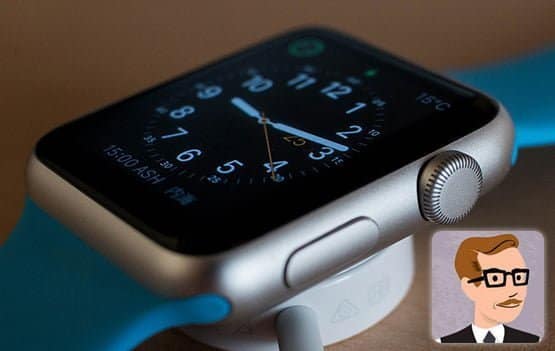Tom’s digital health disruptors: EHRs crunch with Apple

A month on from the launch of the Apple Watch, and we’re still waiting to see if the device ranks alongside the like of the Apple’s iPhone and iPad as a revolutionary technology for both personal and business use – or remains a niche toy for the tech-obsessed fanatics.
Reaction from tech blogs tended to suggest that the device was another solid if underwhelming Apple product, with limited functionality and a lack of killer apps; although most were keen to write up its potential.
For Apple, much of the value of the product is based on its abilities in healthcare, with seemingly hundreds of personal health apps signed up to the service already.
However, if the Watch is to have the kind of impact that, say, Sir Bruce Keogh was predicting recently, it will need to link into enterprise electronic patient records using HealthKit, which serves as a platform to house and connect healthcare and fitness apps on the company’s devices.
The starship for enterprise
The possibilities have already captured the interest of several major US-based EPR suppliers, among them Cerner; which last month announced it was launching its HealtheLife app on the Apple Watch as part of a pilot with two major healthcare providers.
Patients involved in the project use a set of devices, such as glucose meters, to record personal information and upload to the app using HealthKit, from where this data can be sent directly to a patient’s electronic health record on Cerner Millennium.
Brian Carter, Cerner’s senior director and general manager, personal health, told Digital Health News: “The data will be written into the electronic medical record, but will be clearly marked as coming from the patient, so that providers, and the software they’re using, can clearly distinguish clinically-generated data from personally-generated data.”
Carter, who describes the Apple Watch as the “next evolution in healthcare”, says wearable devices make it easier to track daily activities that can influence an individual’s health status.
“I liken it to the difference between a strobe light and a flood light; if we only look at data captured during encounters with providers, there’s a lot of information we’re missing to make the most informed choices in how to take care of someone, or help them take care of themselves.”
Other hospitals have already begun to use the Apple Watch to support patients, including Ochsner Health System, a healthcare provider in Louisiana. It is piloting the device in its Ochsner Hypertension Digital Medicine Program to help people struggling to control blood pressure.
The hospital already had wireless blood pressure cuffs integrated with HealthKit and the records created by its EPR provider Epic, which announced last year that its clinics and hospitals in the US would be able to use its MyChart patient portal app to link to HealthKit.
Now Ochsner has added the Apple Watch to its plans with the aim of improving adherence through the use of prompts and reminders to take medicines and to encourage a healthier lifestyle.
Like tech? Spend on it…
The US has seen use of EPRs explode since President Barack Obama made the implementation of digital medical records mandatory for healthcare providers by 2014.
This means its healthcare providers may be in a better position to add on innovations like HealthKit and the Apple Watch than hospitals in the UK; none of which have yet announced similar ventures with their EPR providers (although some have set up personal health records using the less flashy Microsoft HealthVault).
The US’ divided healthcare system also allows big, well-endowed, providers to test innovative new technologies at pace, in an environment in which there is general enthusiasm for new tech.
In a national system like the NHS, any change can become bogged down in commissioning and tariff rows, and there is a greater burden to prove that innovations are delivering efficiency savings at a time of immense cost-cutting.
However, both systems are starting to look at shifting from paying for treatment to paying for pathways of care or even to improve outcomes across whole populations, which may drive interest in technology that can monitor conditions and chivvy people into improving their lifestyles.
Interestingly, Cerner has plans to expand its HealtheLife for Apple Watch project to other countries, with a UK spokesperson telling Digital Health News: “The US team is making sure they do it right over there and then the app will be made available in each country.”
And in the UK, Emis announced last year that it was using the HealthKit platform to create a personal health record integrated with its Emis Web GP and clinical system. Significantly, Emis started out as a GP supplier, and in the UK it is GPs who do personal health management and – through the clinical commissioning groups – are being expected to take on population health management.
Meanwhile, over here
Speaking to Digital Health News, Emis’ chief medical officer Shaun O'Hanlon said that patients can upload information such as exercise data, blood pressure, height and weight, giving doctors “a really great insight into data recorded by patients themselves to allow more visibility of their medical details”.
The deal also means that Apple Watch users can also use HealthKit functionally to access the Emis EPR. O’Hanlon says: “It should work straight out the box.”
O'Hanlon sees the Apple Watch as having the potential to have an impact in two areas: the consumer area and the professional area.
On the consumer side of things, he sees the possibility of a “feedback loop” for exercise activity and weight loss programmes. On the professional side, he says medics could use the device to access “targeted notifications”, such as information about patients who have missed medication or need urgent attention.
He does voice a note of caution, though, saying “we need to remember it won’t be for everybody”, and suggesting that some people may find use of the device “intrusive”. Indeed, he admits he doesn’t yet know if wearables will become the new smartphones; or whether they will become “a fad that will disappear.”
“The only way they will become ubiquitous is if they are presented as a platform that can be adapted, and that we can learn how to adapt them to how people want to use them, which is what happened with smartphones,” he says.
“But we don’t know. It could go down in flames. I’m very optimistic that it won’t, though, because it’s an extension of the phone paradigm. It’s making it more usable.”
First find your Watch
That still leaves the issue of cost. As O’Hanlon says, just where will the money come from to pay for these new pieces of kit, and how will their value be determined?
Trusts have required tech fund and Nursing Technology Fund money to roll out tablets, bedside devices, and mobiles; finding the cash to purchase a load of Apple Watches may prove to be a more difficult task, considering the current lack of central IT funding or evidence of clinical benefit.
NHS England chief executive Simon Stevens has promised to set out more information about how prevention and new service models will contribute to the £22 billion of efficiency savings required to deliver on his ‘Five Year Forward View’ in the next fortnight.
But it would be a real surprise if he included a mass personal health and wellness monitoring programme using new technology, or even the kind of tariff changes that would encourage some brave ‘vanguards’ to look at one.
Even so, it will be useful to keep track of what happens in the US, as the collection and use of personal health data grows in popularity. Although I’d recommend not getting too excited about a specific device that still isn’t available in an actual Apple store in this country.


Tom Meek
Thomas Meek is a reporter at Digital Health News.
He joined the company in February 2015 after spending several years writing about the pharmaceutical industry and healthcare communications, where he developed his interest in using new technologies to support patient care and education. He has a degree in journalism from The University of Stirling.
Find him on Twitter at @DHTomMeek




